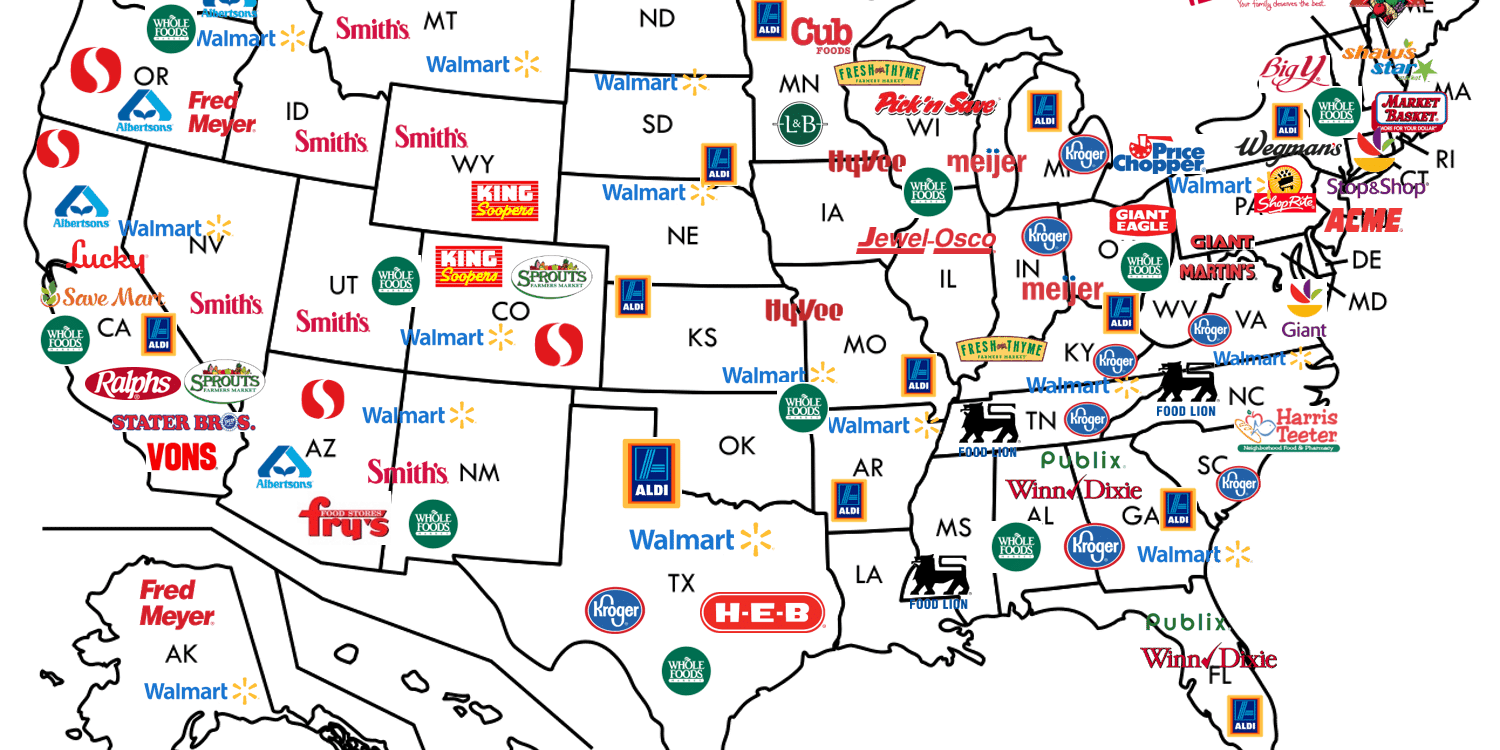 Entering the U.S. retail market presents a wealth of opportunities for international retailers. As the world’s largest consumer market, the United States offers unmatched potential for growth. However, succeeding in this highly competitive and complex landscape requires a well-thought-out strategy. From understanding U.S. consumer behavior to navigating regulations, international retailers need a clear plan to thrive. Retailing in the US market as an International retailer can be very lucrative. The US retail market offers a wealth of opportunity.
Entering the U.S. retail market presents a wealth of opportunities for international retailers. As the world’s largest consumer market, the United States offers unmatched potential for growth. However, succeeding in this highly competitive and complex landscape requires a well-thought-out strategy. From understanding U.S. consumer behavior to navigating regulations, international retailers need a clear plan to thrive. Retailing in the US market as an International retailer can be very lucrative. The US retail market offers a wealth of opportunity.
In this blog, we’ll explore key factors to consider when entering the U.S. retail market, providing strategies to help international retailers establish and grow their presence.
Understand U.S. Consumer Behavior
One of the first steps to retailing successfully in the U.S. is understanding the preferences, needs, and behaviors of American consumers. U.S. shoppers value convenience, personalization, and a seamless shopping experience across all platforms.
Here’s what to keep in mind:
- Omnichannel Shopping: U.S. consumers expect a consistent shopping experience, whether online, in-store, or through mobile devices. Offering both e-commerce and brick-and-mortar options can boost customer engagement. Additionally, features like “buy online, pick up in-store” (BOPIS) are highly popular.
- Brand Loyalty and Personalization: Many U.S. consumers are drawn to brands that provide personalized experiences. Tailoring your marketing efforts to individual preferences—whether through personalized emails, product recommendations, or loyalty programs—can make a significant impact.
- Price Sensitivity: While the U.S. market offers luxury brand opportunities, price sensitivity is a common trait. Providing value, competitive pricing, or special promotions can help capture a broad audience.
By studying consumer trends and tailoring your approach, you can position your brand to meet U.S. shoppers’ expectations and preferences.
Comply with U.S. Regulations and Standards
Entering the U.S. market means adhering to numerous laws, regulations, and standards. Failing to do so can result in costly fines, legal complications, or damage to your brand reputation.
Key areas of focus include:
- Product Standards and Labeling: Ensure that your products meet U.S. regulations for safety and quality. For example, the Food and Drug Administration (FDA) oversees cosmetics and food products, while the Consumer Product Safety Commission (CPSC) regulates other retail goods. Proper labeling, including ingredient lists and warnings, is required.
- Tariffs and Import Duties: As an international retailer, you’ll need to understand U.S. import tariffs and duties. Different products are subject to varying tariffs, and failing to account for these costs could impact your profitability.
- State and Federal Regulations: In addition to federal laws, each state may have its own specific regulations. For instance, California has strict environmental and safety requirements under Proposition 65. Understanding the laws that apply to your industry and region is crucial.
Consulting with legal experts or regulatory consultants can help ensure compliance, avoiding costly mistakes as you enter the U.S. market.
Develop a Strong E-Commerce Strategy
The U.S. retail market has seen a massive shift toward online shopping in recent years. For international retailers, a strong e-commerce presence is essential to success. A well-optimized online store will help you reach U.S. consumers directly, regardless of your physical location.
Here are a few tips to succeed in U.S. e-commerce:
- Localization: Your website should cater to U.S. shoppers. This includes using U.S. dollars, following local holidays for promotions, and providing customer service in English. Make sure your website is optimized for mobile, as mobile commerce continues to grow rapidly in the U.S.
- Fast Shipping Options: U.S. consumers expect fast and affordable shipping. Partnering with reliable logistics providers or utilizing local warehouses for fulfillment can reduce shipping times and costs.
- SEO and Digital Marketing: Invest in search engine optimization (SEO) to ensure your website ranks highly in search results. Google is a key tool for U.S. shoppers to find products, so optimizing your site for relevant search terms is crucial. Additionally, social media platforms such as Instagram and Facebook can help raise brand awareness and drive traffic.
By investing in a strong digital presence, you’ll be better positioned to capture the attention of U.S. shoppers and compete with local retailers.
Leverage U.S. Retail Partnerships
For many international retailers, partnering with U.S. retailers can ease the transition into the market. U.S. retailers, whether large chains or specialty stores, already have an established customer base and infrastructure.
Benefits of retail partnerships include:
- Established Distribution Channels: Partnering with U.S. retailers allows you to use their existing distribution networks, ensuring your products reach a wide audience without the need to build your own supply chain.
- Brand Recognition: Being sold by a well-known U.S. retailer can lend credibility to your brand. This is especially useful if your brand is relatively unknown in the U.S.
- In-Store Opportunities: Physical retail still plays a significant role in U.S. shopping habits. A partnership with a major retailer like Target or Walmart can give your products a presence in physical stores, enhancing customer access and visibility.
Building relationships with established U.S. retailers can open doors to faster growth and market penetration.
Create a Competitive Pricing Strategy
Pricing your products appropriately for the U.S. market is critical to success. International retailers often face challenges related to currency exchange rates, shipping costs, and tariffs, which can drive up prices.
To create a competitive pricing strategy:
- Analyze the Competition: Research the pricing of similar products in the U.S. to get a sense of what customers are willing to pay. Competitors’ pricing can guide your own approach, whether you decide to match, undercut, or position yourself as a premium option.
- Consider Currency Fluctuations: Exchange rates can affect the profitability of your products. Keep an eye on currency fluctuations and adjust your pricing accordingly to ensure you’re not losing money due to unfavorable rates.
- Promotions and Discounts: U.S. consumers are highly responsive to promotions, sales events, and discounts. Leveraging seasonal events like Black Friday or offering introductory deals for new customers can drive initial sales and build momentum for your brand.
A competitive pricing strategy that accounts for U.S. market dynamics will ensure your products remain attractive to American consumers while protecting your margins.
Invest in U.S. Marketing Channels
To succeed in the U.S. market, you need to invest in marketing channels that effectively reach your target audience. American consumers spend significant time online and are influenced by social media, digital ads, and influencer marketing.
Here’s how to maximize your marketing efforts:
- Social Media Marketing: Platforms like Instagram, TikTok, and Facebook are ideal for engaging U.S. consumers, especially in the beauty, fashion, and lifestyle sectors. Create compelling content, run ads targeting U.S. users, and collaborate with influencers who can showcase your products to their followers.
- Email Campaigns: Email marketing remains one of the most effective tools for converting customers. Build an email list and send personalized promotions, new product launches, or exclusive discounts tailored to your U.S. audience.
- Paid Advertising: Google Ads and Facebook Ads allow you to reach highly specific audiences. By targeting U.S. demographics, interests, and behavior patterns, you can drive traffic to your e-commerce site and generate sales.
By aligning your marketing strategies with U.S. consumer preferences, you’ll create better brand awareness and drive more traffic to your store.
Provide Excellent Customer Service
Customer service is a vital aspect of succeeding in the U.S. retail market. American consumers expect quick responses, clear communication, and an easy return process. Meeting these expectations can foster customer loyalty and positive reviews, both of which are essential to building trust.
Here’s how to ensure great customer service:
- 24/7 Support: Offering round-the-clock customer service is important, especially if you’re operating in different time zones. Consider using live chat, email support, and toll-free numbers for customer inquiries.
- Generous Return Policy: U.S. consumers prefer flexible return policies. Offering free returns or extended return windows can reduce buyer hesitation and improve satisfaction.
- Positive Online Reputation: Customer reviews play a significant role in influencing purchases. Make sure to respond to negative reviews promptly and offer solutions to ensure a positive experience.
Providing excellent customer service builds a strong reputation and keeps U.S. customers returning to your brand.
Conclusion
Retailing in the U.S. as an international retailer requires a deep understanding of consumer behavior, adherence to regulations, and a strategic approach to marketing. With the right inventory management, competitive pricing, and a focus on seamless e-commerce, international retailers can tap into the vast potential of the U.S. market. By partnering with local retailers, ensuring strong customer service, and leveraging digital marketing, international retailers can establish themselves as competitive players in one of the most lucrative markets in the world. Retailing in the US market as an International retailer can be very lucrative. The US retail market offers a wealth of opportunity.








